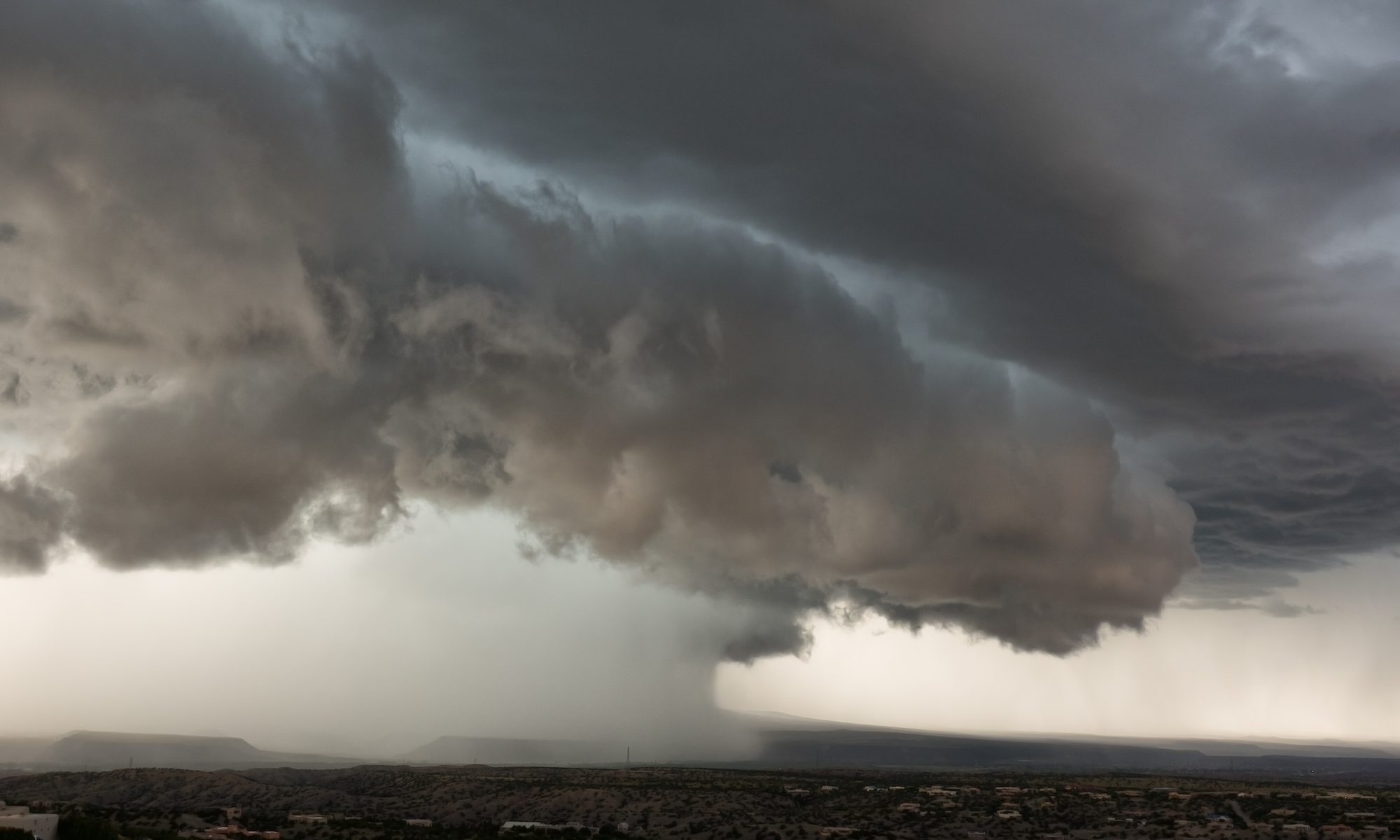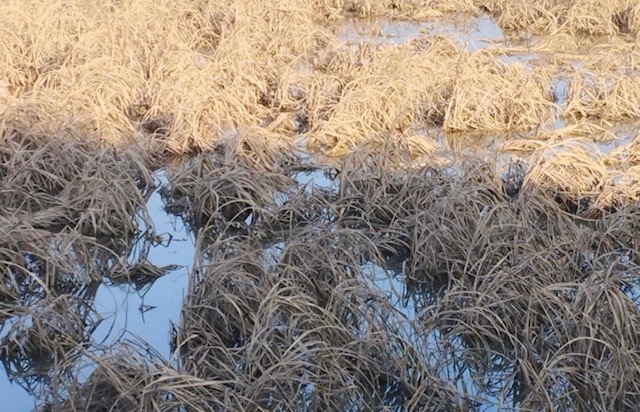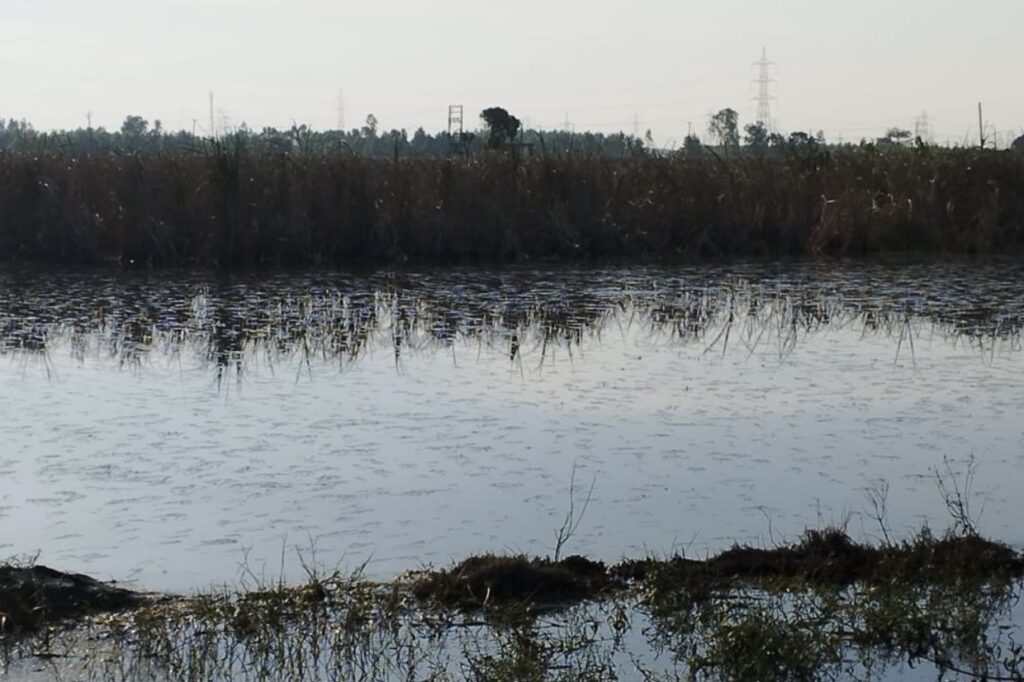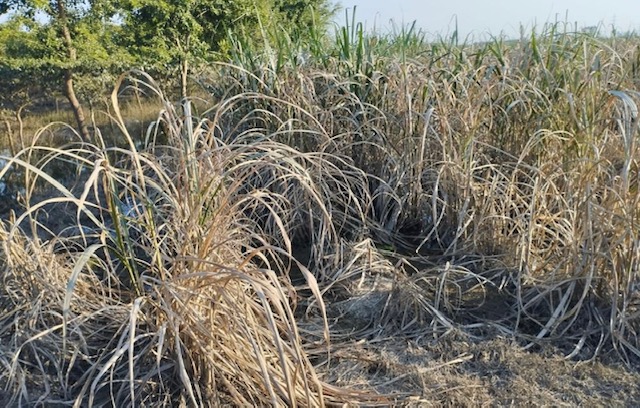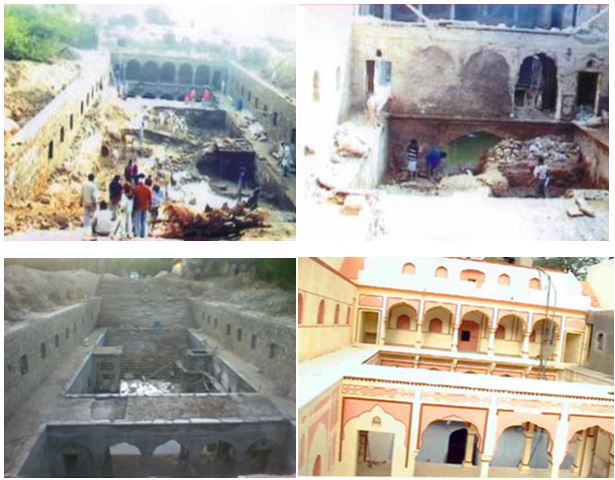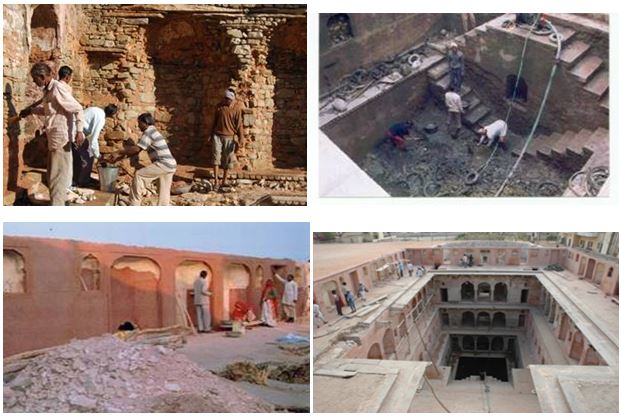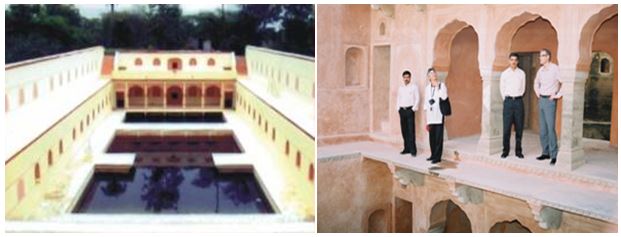In our previous blog, we delved into the swift cascading of water from upstream regions, unfortunately resulting in a rapid departure without replenishing groundwater aquifers.
Consequently, this water accumulates downstream, particularly in plains and farmlands, for an extended and undesirable duration. Besides the visible surface flow, there is an ongoing, invisible subsurface movement beneath the Earth’s surface.
When water falls on hills, it can infiltrate the ground, becoming subsurface water. Excess water accumulates in the subsurface if the soil is saturated or the terrain is poorly drained. It then flows downhill, potentially causing flooding through a process called emergence.
This type of flooding disrupts the delicate ecological balance in a given area, affecting the intricate relationship between soil and plants. Plants require a specific depth of aerated soil for optimal growth, with oxygen playing a vital role.
The Impact of Flooding on Soil
The aftermath of such flooding leads to waterlogged soil, nearing saturation and impeding aeration, creating anaerobic conditions. This depletion of oxygen in the root zone adversely impacts microorganisms crucial for supporting plant growth, restricting overall plant growth.
Water logging reduces soil temperature and increases dampness, disrupting biological activities within the soil. It also vastly affects operations related to soil enrichment and development, affecting irrigated agricultural lands.
Water logging often coincides with soil salinity, impeding the leaching of salts brought in by irrigation water. This exacerbates adverse effects, especially when salts from lower soil layers are transported upward by capillary action.
Rise in soil salinity disrupts nutrient absorption by plant roots, damaging plantations and altering the physical characteristics of the soil. The soil becomes less permeable to water and more prone to runoff, negatively impacting neighboring lands and vegetation. Even fodder grown in such soil may pose health risks to livestock.
Based on our three decades of experience, we have learned that flooding exerts a prolonged detrimental influence on soil. While immediate effects may not be readily apparent, long-term consequences involve a gradual degradation of soil quality, diminishing its water absorption capacity.
In reality, the water wreaks havoc both upstream and downstream, presenting a clear situation before us.
Case Study: Trial Bore in Flood-Prone Haryana
At SILVERON, we recognize the tangible and intangible losses incurred due to flooding in India, seeing it as an immeasurable national setback. We recognize the challenges of rapid infiltration posed by limited soil permeability or impermeable layers. We have proposed a strategic solution involving the implementation of drilling recharge shafts.
Our well-established design not only facilitates surface water infiltration but also intercepts subsurface flow, contributing to the replenishment of groundwater levels. The unlined bore design of our recharge shaft enhances its effectiveness in checking subsurface water.
Once water finds an easy path through the shaft, it establishes a regular route, attracting more water towards it. By enhancing the rate at which water permeates the ground, our solution holds the potential to significantly mitigate the impact of flooding.
We conducted a trial bore to test our shaft design in challenging flood management conditions, despite our confidence and experience.
As part of our social responsibility, we installed a Trial Recharge Shaft, at our own cost, in the flood-prone plains of Haryana. These plains experience annual inundation during monsoon as they sit below the mountains of Himachal Pradesh.
Our Endeavor
- We drilled the trial bore to appropriate depth to take advantage of soil strata having good absorption capacity and developed the recharge shaft following our standard basic design.
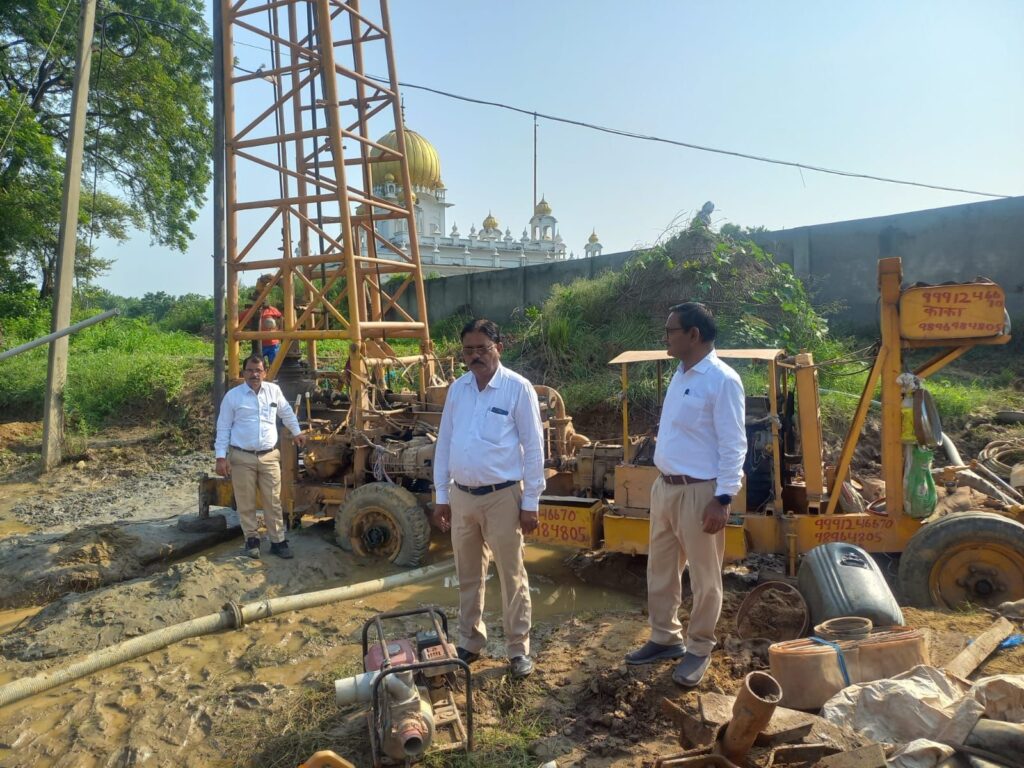
- We deployed custom-designed Hume pipes, with a special 3 feet diameter and 8 feet length. These pipes featured holes of varying diameters (2, 4, and 6 inches) to facilitate water entry into the Recharge Shaft. Positioned at an 8 ft. length, 5 ft. of the pipe submerged into the ground, with 2-inch diameter holes positioned about 6 inches above the ground. Hole sizes are arranged in increasing order, considering the diminishing quantity of suspended silt as the water level rises.
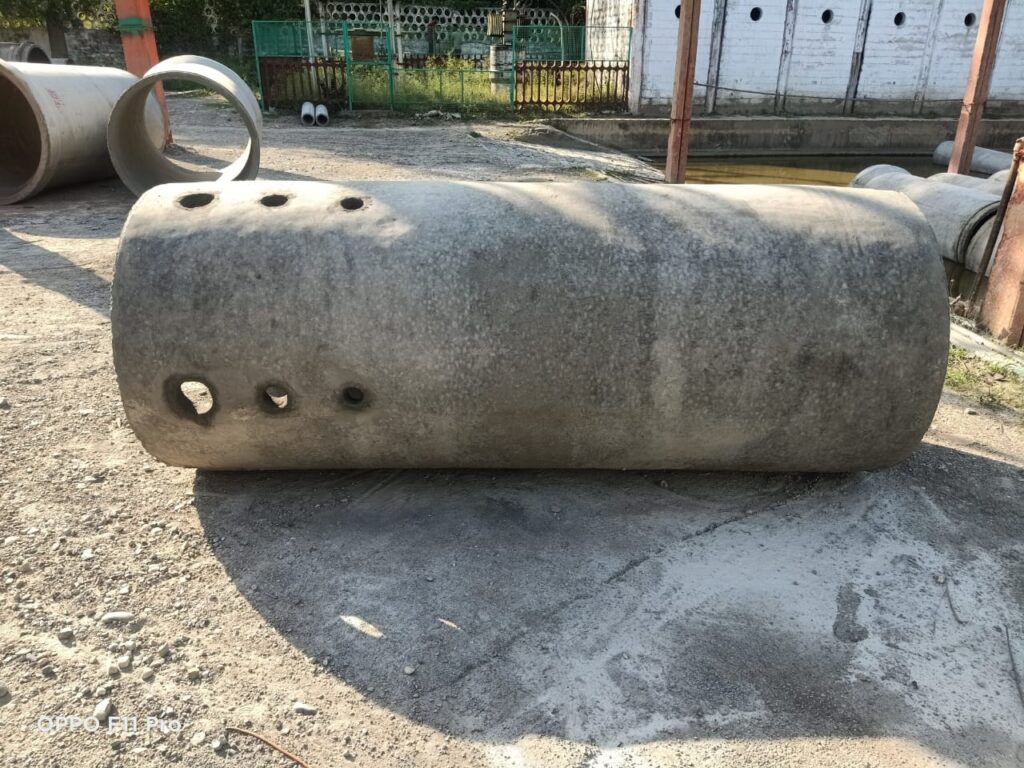
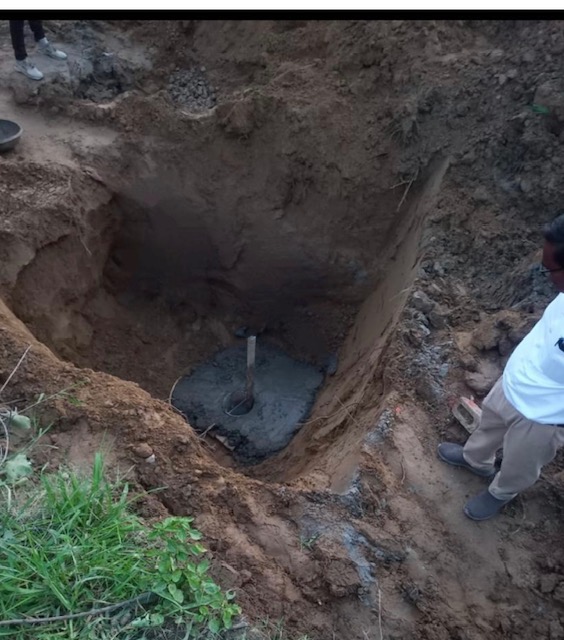
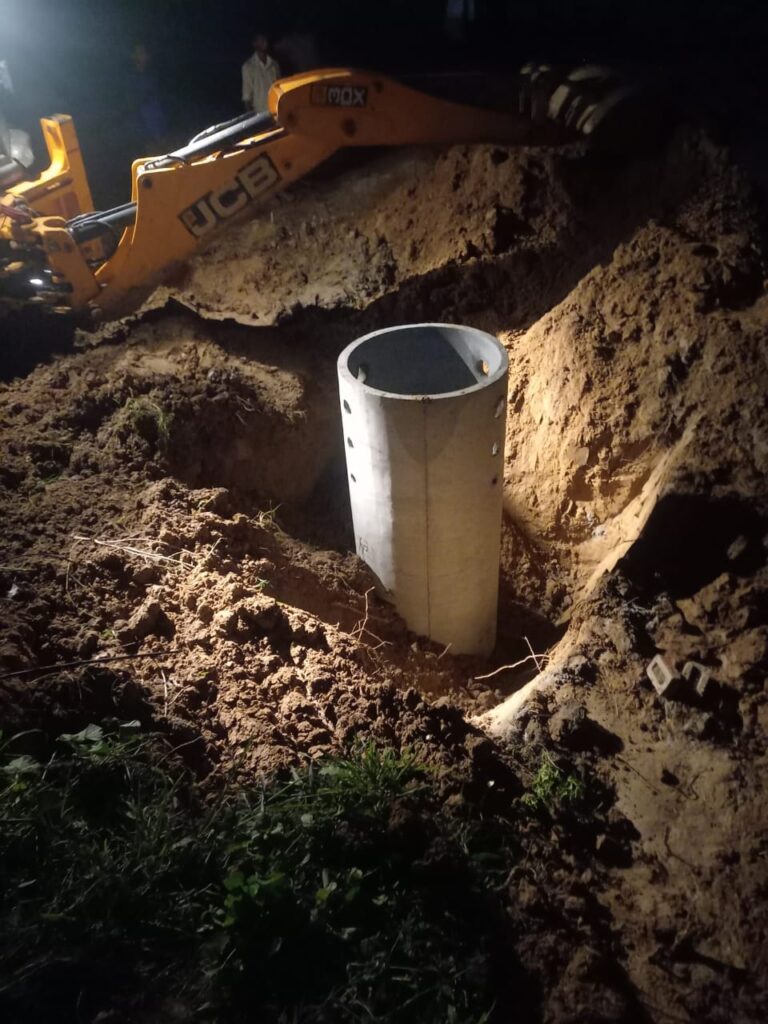
- A wire mesh barricade, standing at a height of 3 ft., was grouted around the Hume pipe, 3 feet away in all directions. We fill the space within the Hume pipe, between the pipe and the wire fencing with aggregate. This system prevents entry of suspended leaves, paper, polythene, and captures a portion of the suspended silt by reducing velocity. We then cover the top of the structure with wire mesh and aggregate.
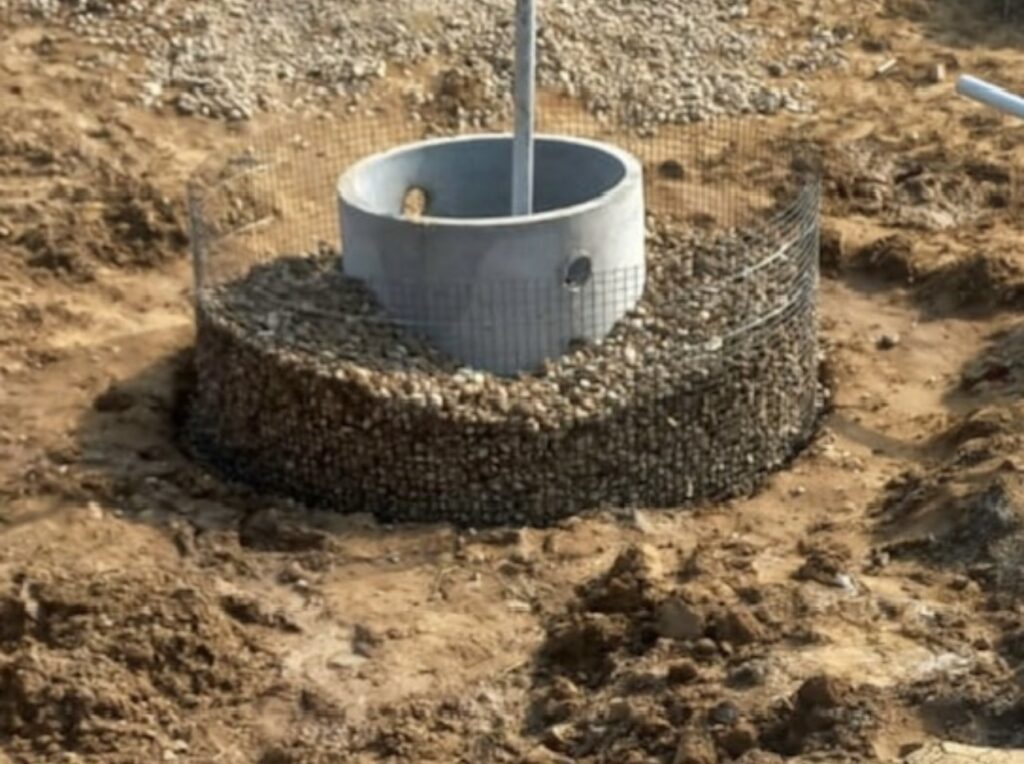
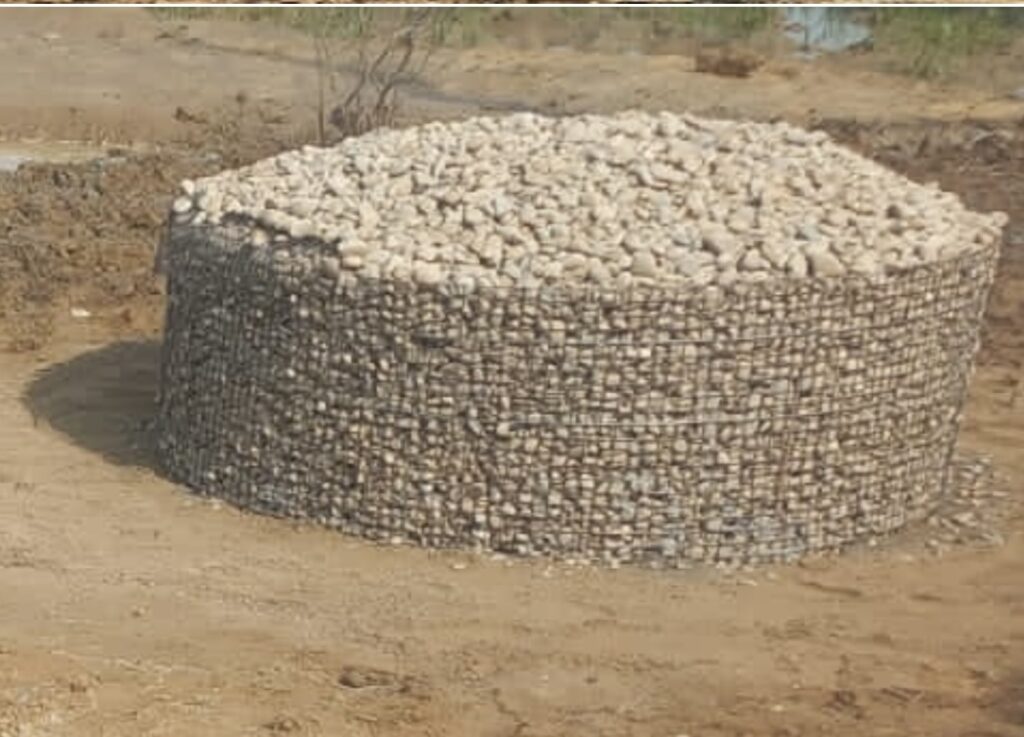
These structures effectively mitigate the impact of running or collected rainwater, preventing serious damage to field soil or crops.
It’s noteworthy that each recharge shaft maintains a consistent intake speed, with observed likely intake flow around 200 cubic meters per day.
Triumph is attainable solely through proactive endeavors.
